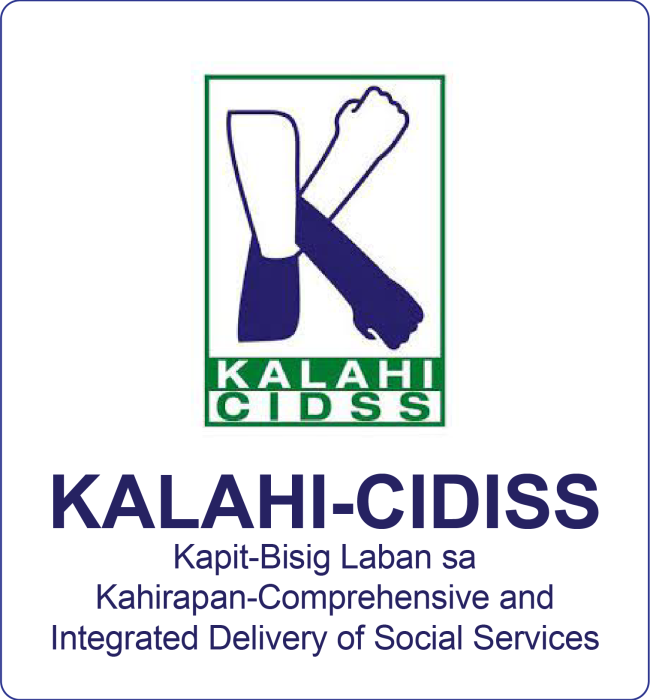Kapit-Bisig Laban sa Kahirapan

Kalahi-CIDSS, otherwise known as the Kapit-Bisig Laban sa Kahirapan – Comprehensive and Integrated Delivery of Social Services, is one of the poverty alleviation programs of the Philippine Government being implemented by the Department of Social Welfare and Development (DSWD). It uses the Community-Driven Development (CDD) approach, a globally recognized strategy for achieving service delivery, poverty reduction, and good governance outcomes.

Started in 2003, its scale-up was approved on 18 January 2013 by the National Economic Development Authority (NEDA) Board, which was headed by President Benigno Aquino III.
The development objective of Kalahi-CIDSS is to empower barangays/communities of targeted municipalities to achieve improved access to services and participate in more inclusive local planning, budgeting, and implementation. The Kalahi-CIDDS also gives control of resources to address local poverty to communities and builds the capacity of both state (including local governments) and civil society stakeholders to provide assistance and respond to calls for support from poor communities as they implement development initiatives.
Beneficiaries of the Kalahi-CIDDS are selected based on the list from the National Statistics and Coordination Board (NSCB) of the poorest provinces. Using the Municipal Poverty Mapping, the poorest 25% of municipalities in a province are selected through a multi-stakeholder provincial forum.
In July 2002, Kalahi-CIDSS pilot-tested the 16-step process of the Community Empowerment Activity Cycle (CEAC), the platform for engaging and capacitating communities through a process of community planning and action. The pilot test, which ran for six months, provided the experience and model that guided the first batch of municipalities that adopted the CDD approach.
Kalahi-CIDSS was officially approved in 2003 with funding support from the World Bank. Its scale-up was approved on 18 January 2013 by the National Economic Development Authority (NEDA) Board.

